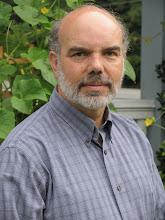 Incendiary by Chris Cleave
Incendiary by Chris CleaveMy rating: 4 of 5 stars
Incendiary is the second book I've read by Chris Cleave. I didn't feel it came up to Little Bee, but it is still a very good read. I listened to the audio version which was narrated perfectly by Tracy-Ann Oberman.
This is the story of a working class woman living in London, who suffers a horrible tragedy, then tries to cope. The novel is written in the form of a long letter to Osama bin Laden. Normally, a novel written in the form of letters is called epistolary, but this book deviates from the letter form by including so much description and dialogue that I wouldn't use that term.
The narrator is a brash and imperfect woman, but described in a way that brings the reader into her world enough to create sympathy for her. Here's what she says about herself early on:
I was what The Sun would call a “dirty love cheat.” My husband and my boy never found out, oh thank you, God. I can say it now they're both dead. I don't care who reads it. It can't hurt them anymore. I loved my boy. And I loved my husband...Sex is not a beautiful and perfect thing for me, Osama. It is a condition caused by nerves.
Sex helps her deal with life's problems prior to the tragedy, but afterwards, it isn't enough.
I had a problem with the novel's ending and I also felt there were some conflicts in the way the narrator perceived reality that weren't sufficiently explained by her state of mind. Still, this is a good book. It captured me and I felt it painted a full picture of a young mother who at first was trying to build a life that was a shelter, a place of love. Here's how she described a part of that place.
Our boy had his own room it was cracking we were proud of it. My husband built his bed in the shape of Bob the Builder's dump truck and I sewed the curtains and we did the painting together. In the night my boy's room smelled of boy. Boy is a good smell it is a cross between angels and tigers.
Her own imperfections along with the horrors of life in the 21st century pushed tragedy into her world. This novel is about what happens after that.
Steve Lindahl – author of Hopatcong Vision Quest, White Horse Regressions, and Motherless Soul
View all my reviews








